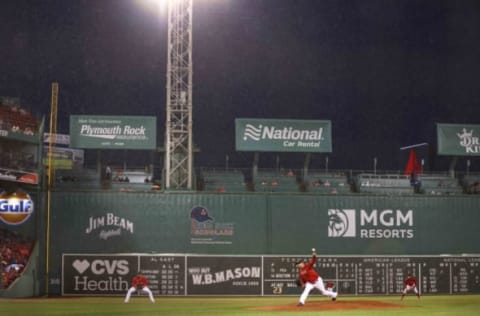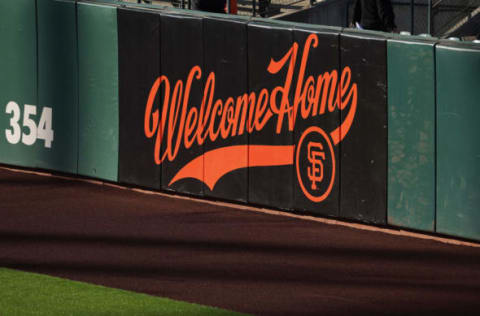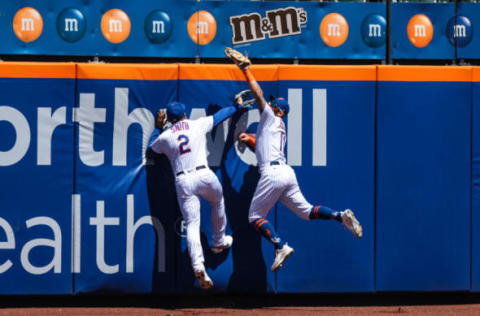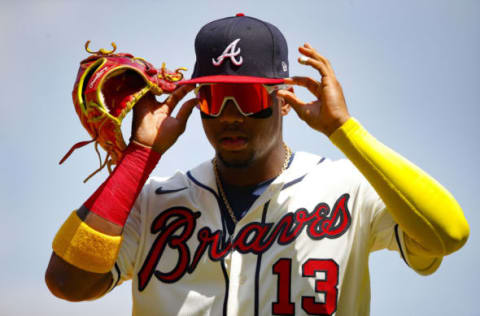Detroit Tigers: 4 Michael Fulmer trade destinations

Michael Fulmer’s transformation from one of baseball’s worst starters in 2020 to a fire-breathing reliever with a triple-digit fastball in 2021 has been remarkable.
Now let’s trade him.
We understand if Detroit Tigers fans are tired of selling off players and want to settle on a foundation for the rebuild. Michael Fulmer has quickly become Detroit’s most reliable bullpen arm, and we’d have no issue if the Tigers think he’s worthy of a reasonable contact extension.
But it’s clear the Detroit Tigers still don’t have the core of their next contender in place. It might be nice to not worry about the closer for a few years, but that feels like an unnecessary luxury on a 65-win team.
The Tigers have interesting trade chips in Matthew Boyd, Robbie Grossman, and José Ureña, but teams just don’t pay much at the trade deadline for solid-average outfielders or back-of-the-rotation starters.
If the Detroit Tigers want to add real value they have to move Spencer Turnbull or Michael Fulmer. Turnbull is actually six months older than Fulmer, but as a starting pitcher with 3+ years of control remaining, we think it’s a bad idea to trade him now.
That leaves Michael Fulmer.
Contenders always look for bullpen help at the trade deadline, and Al Avila’s best trade returns have come when he has multiple suitors eyeing his relievers. It seems like a perfect time to move Michael Fulmer. But what can the Tigers expect to get for him?
Michael Fulmer’s Trade Value
Michael Fulmer is making $3.1 million this season. Ordinarily we would use his projected WAR and salary to find his surplus value, but that all goes out the window when it comes to relievers. The best way to find Michael Fulmer’s value is to look at his stuff, his results, and recent trades for similar players.
Fulmer has a starter’s arsenal with a closer’s arm, and that makes him uniquely valuable. He could come into the middle of a game to get nine outs, or he could work as a setup man or closer and unleash his upper-90s heat, hard slider, and a swing-and-miss changeup.
As a reliever, Michael Fulmer owns a 3.50 FIP with a strikeout rate near 30% and a walk rate under 5%. He may need to produce for a bit longer to convince teams this is real, but that’s roughly the same level of performance we saw from Justin Wilson in 2017 and Shane Greene in 2019.
Fulmer, like Wilson and Greene before him, has another year left on his contract. That makes him an ideal trade target for any team planning to compete for the next few seasons, and it gives us a good idea what kind of return the Tigers can expect.
When the Tigers traded Justin Wilson (and Alex Avila) to the Cubs they received Jeimer Candelario (a 50FV prospect in FanGraphs parlance) and Isaac Paredes (45FV). Shane Greene brought back Joey Wentz (45FV) and Travis Demeritte (35FV).
Now that we know who might be targeting Fulmer, and what it could cost to land him, let’s make some fake trades! Hit the jump to see our proposals.
Michael Fulmer Trade Destination 1: Boston Red Sox

The Boston Red Sox finished last in the A.L. East in 2020, but they’re back near the top of the division this season, and it appears to be real. Boston has a strong offense built around the young core of Xander Bogaerts, Rafael Devers, and Alex Verdugo, a solid rotation of starters who appear to be overachieving right now, and one of the better performing bullpens in the America League so far. Their closer Matt Barnes has been stellar, but the bullpen is a little thin after him, and Michael Fulmer would give them a dynamite 1-2 punch at the end of games. Here’s our proposal:
San Diego took Hudson Potts in the first round back in 2016, and then shipped him to Boston in a trade for Mitch Moreland. Drafted as a shortstop, Potts quickly moved to third base, but he’s also seen some time at second and first. He should be adequate in the corners and could survive as a shift-aided second baseman, but his calling card is power. Potts has the raw pop to hit 30 homers one day, but his aggressive approach may prevent him from maximizing his game power.
Cameron Cannon was Boston’s 2nd-round pick in 2019 (taken 5 picks ahead of his college teammate Nick Quintana) and he offers an intriguing bat with limited secondary tools. His defense is passable at second base, and he’s a below-average runner, but there’s a chance he could hit enough to become a regular.
Michael Fulmer Trade Destination 2: San Francisco Giants

The San Francisco Giants are another club competing a bit earlier than expected. The Giants are finding success with veterans like Brandon Crawford, Evan Longoria, and Buster Posey, so they may not want to go all in on 2021, but it’s been five years since they’ve made the playoffs and they can afford to improve without mortgaging the future. Right now the Giants rank in the top 10 for offense and starting pitching, but their bullpen has been well below average. Jake McGee is an adequate closer, but Michael Fulmer would probably be an upgrade. Here’s our proposal:
The Angels drafted Will Wilson with the 15th overall pick in 2019, but they quickly sent him to the Giants as the inducement for San Francisco to take on Zack Cozart’s contract. Wilson doesn’t stand out physically, but he has premium bat speed and he should be able to hit for enough power to profile as a regular at second base. He can fill in at other positions, and may ultimately be best as a bat-first utility man.
Also selected in the 2019 draft (4th round), Tyler Fitzgerald was a moderately famous name as a multi-year starter for Louisville. He was productive as a junior, but his tools are fringy across the board, and he’s not particularly twitchy or athletic. Fitzgerald has the frame (6’3, 205) to grow into more power, but he’s another player who may be best in a utility role.
Michael Fulmer Trade Destination 3: New York Mets

Michael Fulmer began his career in the New York Mets organization, but they traded him to Detroit when they needed a big outfield bat. The Mets’ bullpen is deep and talented right now, but they’re in a tightly contested division, so adding more talent never hurts. On the other hand, New York may have the least productive outfield in baseball, and they could certainly use help there. So let’s make this one a bit more interesting. Here’s our proposal:
Grossman is currently outperforming the entire Mets outfield by himself, and his extra year of team control gives New York a bit of insurance for 2022 should Michael Conforto leave in free agency. The Mets gave Ronny Mauricio a $2 million bonus out of the Dominican Republic in 2017, and though he has never put up great in-game numbers, scouts still seem to adore his potential. He’s a 6’3 switch-hitter with good bat-to-ball skills, the potential for average power, and a decent chance to stick at shortstop. He’s been ranked a top-100 prospect at many outlets, but he seems more like a potential average big-leaguer than a star.
Carlos Cortes is half-a-foot shorter than Mauricio, and instead of being a switch hitter, he’s a switch thrower. Cortes isn’t a terribly good defender at second base or in the outfield, but he’s a lefty who puts the bat on the ball, takes his walks, and has fringe-average power. He could develop into a solid platoon option.
Michael Fulmer Trade Destination 4: Atlanta Braves

The Braves are right in the thick of the same contested division as the Mets, and they’ve been battered by injuries to their pitching this year. Right now the Braves starting staff ranks 22nd in fWAR, and their bullpen ranks 17th. The Tigers and Atlanta have made a few trades over the last few years, and both sides seem happy with the Shane Greene deal, so let’s see if history can repeat itself. Here’s our proposal:
This one takes a bit of projection for Tigers fans, but there’s a lot of upside to these two players. Michael Harris II is a switch-hitting center fielder with impressive contact skills and the chance to hit for above-average power. He’s a tick above-average as a runner, so he may fit best in right field, but that shouldn’t be an issue because he was a talented high-school pitcher with a fastball that touched the low-90s. He’s not a top-100 prospect right now, but he may be by the end of the season.
Spencer Strider showed a lot of promise as a freshman for Clemson in 2018 when he worked mostly as a reliever. The plan was for him to move into the rotation, but he missed all of 2019 with Tommy John surgery, and then threw just 12 innings before the 2020 season was canceled. Strider doesn’t have the size (6′, 195) of a classic workhorse, but he has reportedly been up to 100 MPH this year, his breaking ball shows above-average potential, and he has even flashed a promising changeup. He’s only in Low-A at the moment, but Strider looks like he may at least be an effective MLB reliever, and with further refinement he could become a solid starter.
Next. 3 Yankees Trade Targets to Watch This Weekend. dark